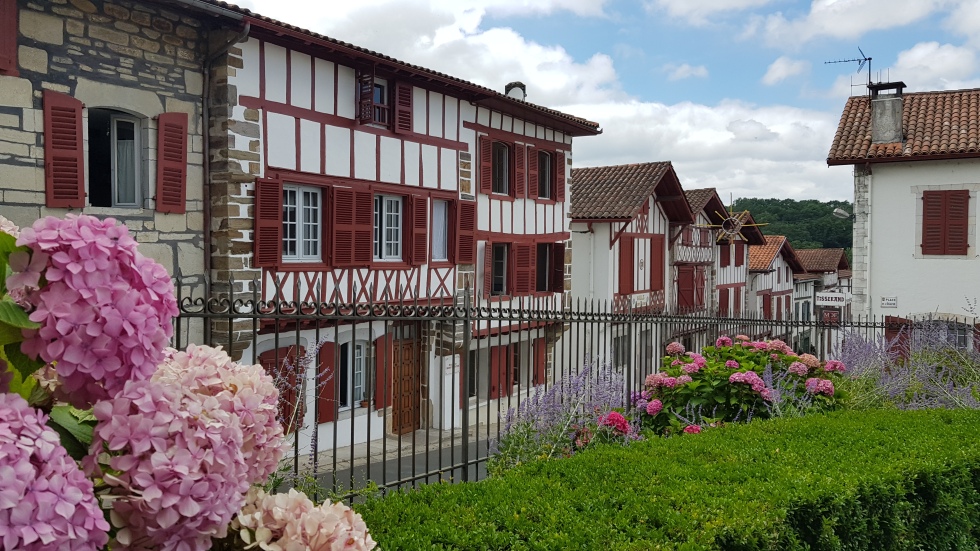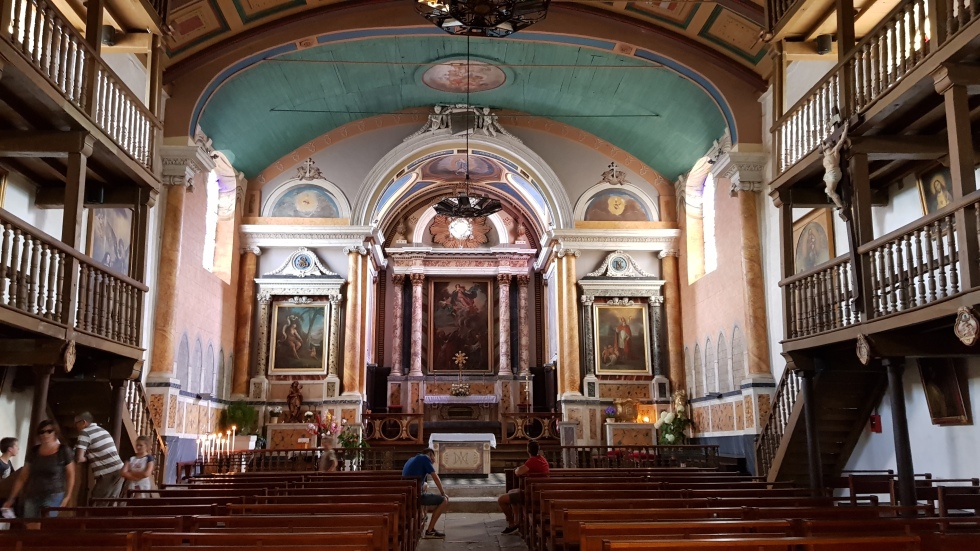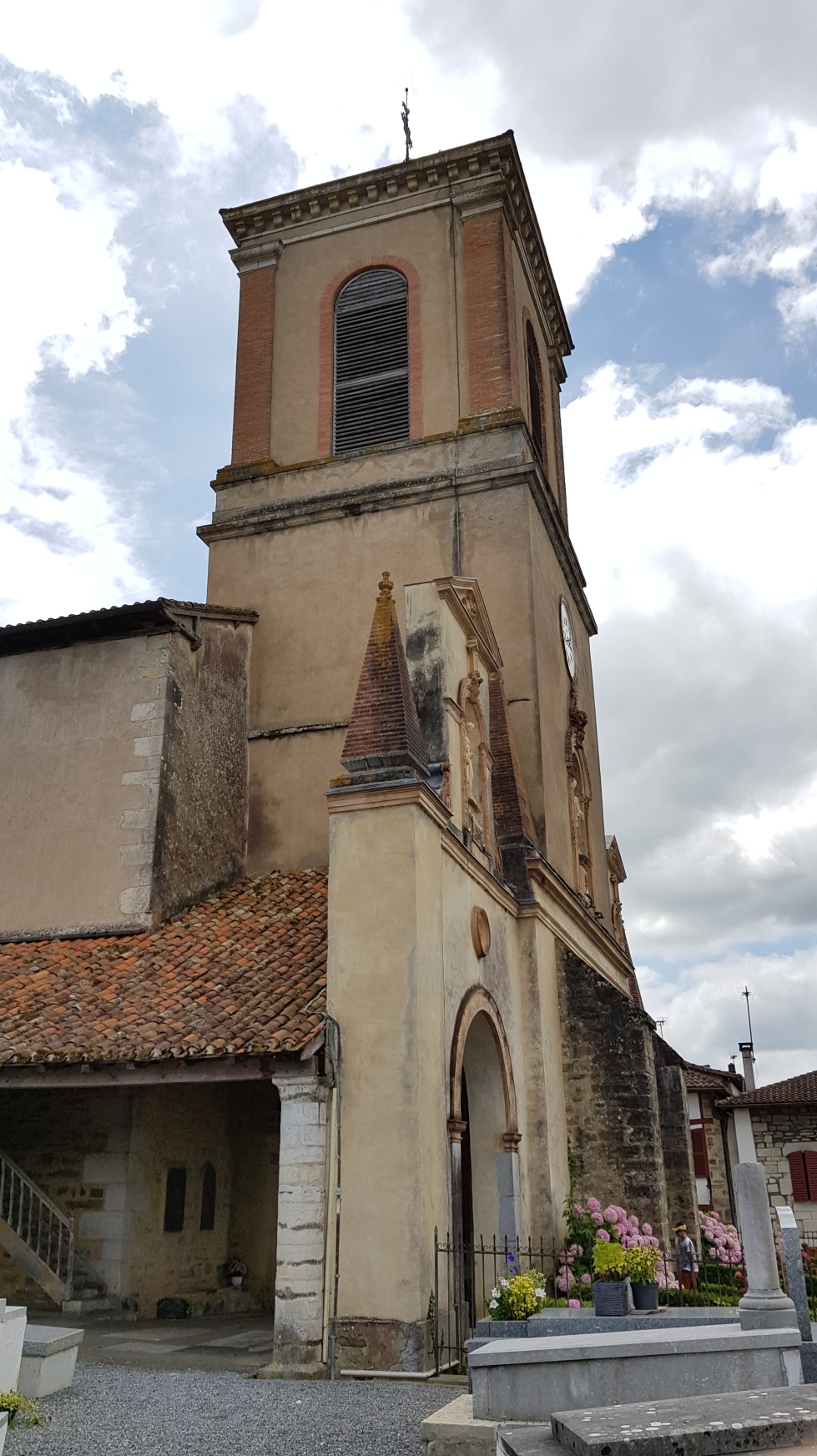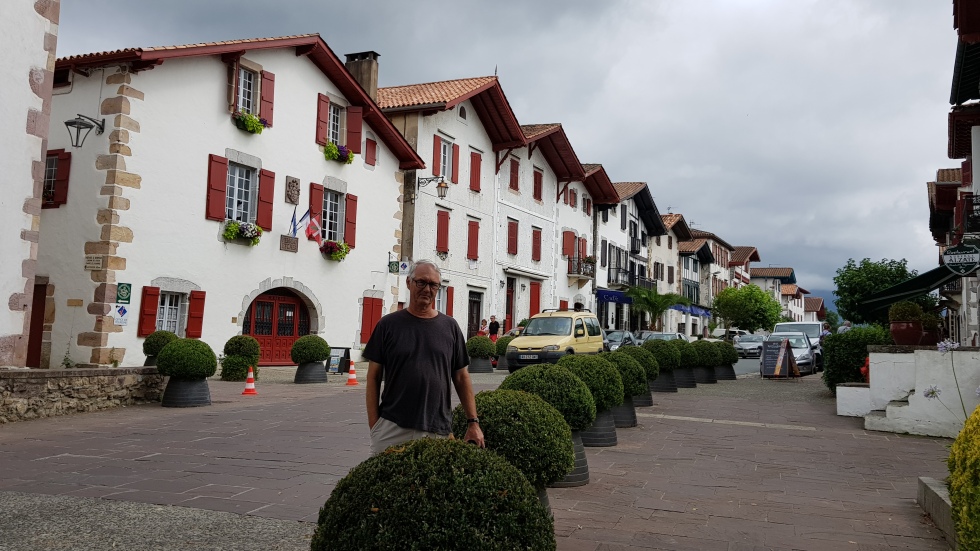Just when I thought our Les Plus Beaux Villages tour was temporarily diverted, there’s a nest of three, just off the Spanish border.
Our drive to them takes us through more beautifully forested areas which eventually open to farmland – corn in the main and still the occasional field of happy sunflowers. Interestingly, it’s one of only a handful of farms we’ve seen with irrigation systems in all our European journeys. Travellers in Australia will be familiar with our farmers’ eternal quest for water, but here it’s a rare sight. After the greenery of the forest it’s a surprise to see fields that wouldn’t look out of place at home.
We’re in Basque country, a unique cultural group who straddle the border of both France and Spain. The Basque are fiercely independent of both countries, championing their own language and traditions.
Our first village, La Bastide-Clairence, is a perfect example of Basque culture. The houses are rendered white, with red shutters, meandering up a hill to the church, brightly decorated with window boxes in flower.
 It’s as neat as a pin, there’s literally not a leaf to be seen. I suspect if you forgot to sweep your stoop in the morning, your neighbours might descend on you, brooms at the ready. La Bastide-Clairence is genuinely different to other villages we’ve seen, and this difference is extended to the church, with its richly painted altar and multi level seating.
It’s as neat as a pin, there’s literally not a leaf to be seen. I suspect if you forgot to sweep your stoop in the morning, your neighbours might descend on you, brooms at the ready. La Bastide-Clairence is genuinely different to other villages we’ve seen, and this difference is extended to the church, with its richly painted altar and multi level seating.
 It’s always sobering to see the war memorials in these tiny villages: six sons from one family lost in WWI. Freedom and peace, as always, come at great cost.
It’s always sobering to see the war memorials in these tiny villages: six sons from one family lost in WWI. Freedom and peace, as always, come at great cost.
The town was founded in 1312 to secure a port and create a new maritime outlet – the river today though seems relatively small. Its original settlers were given the top locations, many of which still have plots at the rear, now mainly prized vegetable gardens.
A little down the road Ainhoa is not dissimilar bar one major differences – it’s surrounded by richly green mountains, offsetting the red and white colour scheme perfectly.
 Green shutters,cthe other predominant Basque colour have crept in to Ainhoa too. It’s a little older, set up in the 12th century, but rebuilt in the 17th. Ainhoa has just the one main street, topped with church in a similar style to its neighbour.
Green shutters,cthe other predominant Basque colour have crept in to Ainhoa too. It’s a little older, set up in the 12th century, but rebuilt in the 17th. Ainhoa has just the one main street, topped with church in a similar style to its neighbour.
 We pick up local goodies before settling for the night at the foot of the mountains: macarons from our first stop, bergamont flavoured dense fudgy gingerbread from our second. Both delightful.
We pick up local goodies before settling for the night at the foot of the mountains: macarons from our first stop, bergamont flavoured dense fudgy gingerbread from our second. Both delightful.



